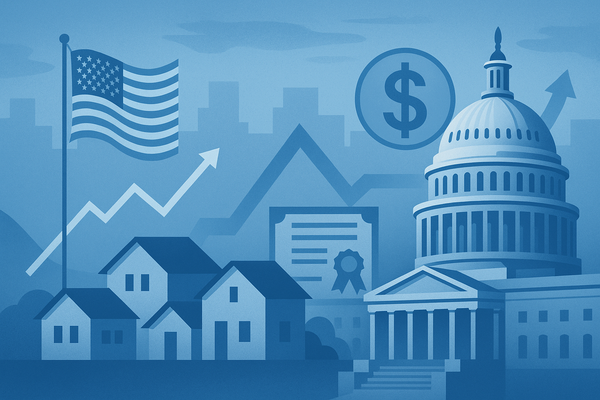Trump’s Peace in the Middle East: A $4 Trillion Dividend for the US and the Death Knell of Xi’s Power

The economic transformation now underway in the Middle East represents one of the most consequential shifts of the 21st century. A potential coalition of ten nations—Saudi Arabia, the United Arab Emirates, Qatar, Israel, Iran, Iraq, Syria, Kuwait, Bahrain, and Jordan—could soon emerge as the world’s fourth-largest economic bloc.
Together, these nations already command a combined GDP exceeding $3.1 trillion in 2024, projected to reach $3.24 trillion next year. Yet the true potential lies beyond these numbers. Under a peace and reform scenario, this regional coalition could expand to more than $4 trillion by 2030, rivaling the economic power of Japan or Germany. Such a transformation could redefine the balance of power across the global economy.
A Region on the Verge of Transformation
Today, three countries dominate the Middle Eastern economic landscape.
Saudi Arabia, with a GDP of $830 billion, represents 26.6% of the regional total. Powered by Vision 2030, the Kingdom is accelerating its diversification beyond oil, with non-oil sectors growing 4.2% in 2024 and unemployment hitting record lows near 7%.
Israel, despite the near-term economic impact of regional conflict and a 4% GDP contraction in Q2 2025, remains a global technology hub with enduring strengths in innovation, cybersecurity, and biotech.
Meanwhile, the United Arab Emirates, with $537 billion in GDP, has achieved one of the world’s most successful economic diversification programs—non-oil activities now contribute 75% of its economy. The UAE continues to grow steadily at 4%, positioning itself as a leading financial and technology bridge between East and West.
Collectively, the other seven nations add enormous potential: Iraq’s reconstruction, Iran’s industrial base, Jordan’s logistics position, and Qatar’s vast energy capacity form a foundation for sustained regional growth, if cooperation prevails.
Two Possible Futures: Status Quo vs. Peace and Reform
Under current conditions, this coalition’s combined GDP is projected to reach $3.81 trillion by 2030, a respectable 17.7% gain from 2025 levels. But this baseline assumes ongoing sanctions on Iran, persistent regional tensions, and limited cross-border investment. Growth remains steady but unspectacular.
The alternative scenario, however, paints a vastly different picture. A genuine peace framework, paired with pro-business reforms, particularly in Iran, could propel total GDP to $4.05 trillion by 2030. That’s a 25% increase, representing a $237 billion peace premium compared with the status quo.
The biggest beneficiary would be Iran, whose economy could grow from $451 billion to $618 billion under a 6.5% annual expansion. This assumes sanctions relief, structural reforms, and roughly $20 billion in annual foreign investment in energy and infrastructure.
Israel too would gain dramatically, reaching $697 billion GDP through a 4.5% annual pace supported by reduced defense spending, expanded trade, and technology partnerships. Every other member state would share in the benefits through improved connectivity, joint projects, and open markets.
A Balanced Regional Powerhouse
By 2030, the peace-and-reform coalition would maintain a balanced economic structure:
- Saudi Arabia still leads at 25.8% of total GDP.
- Israel and UAE each represent roughly 17.2%.
- Iran climbs to 15.3%, reflecting reintegration into global markets.
This balance is vital. It avoids the pitfalls of over-dependence on any single economy and creates an interconnected ecosystem—one where infrastructure, energy, and trade are shared across borders.
Projects such as the India–Middle East–Europe Corridor (IMEC) exemplify the scale of opportunity. The corridor could generate millions of jobs and hundreds of billions in new activity while linking ports, pipelines, and digital networks from Mumbai to the Mediterranean. Historical evidence supports these forecasts: after the Abraham Accords, trade between Israel and Arab states surged 234% in the first year alone.
Peace becomes an economic multiplier.
The $4 Trillion Geopolitical Miscalculation
While the Middle East pivots toward stability and integration, several global powers have misread the moment. China, Russia, France, and the United Kingdom, through their opposition or misalignment with the peace process, now face one of the greatest strategic miscalculations of the decade.
Their error has created an opening that the United States has seized decisively. By leading diplomatic normalization efforts and aligning its economic partnerships with Gulf priorities, America stands to reap an estimated $4 trillion in strategic and economic benefits over the next decade.
The American Economic Windfall
The numbers tell a remarkable story. Gulf partners have pledged over $3.2 trillion in U.S.-directed investments—the largest wave of foreign capital commitments in American history.
- Saudi Arabia anchors this transformation with $600 billion in new investments, including a $142 billion defense agreement, the largest in U.S. history. The partnership now spans defense, AI, and clean energy.
- The UAE has established a $1.4 trillion, 10-year framework focused on artificial intelligence, semiconductors, and manufacturing—cementing the U.S. as its core technology partner. Bilateral trade already totals $47.9 billion, with a $19.6 billion surplus in America’s favor.
- Qatar, through $1.2 trillion in economic commitments, is expanding LNG exports, infrastructure, and joint technology projects primarily with U.S. companies.
All told, this represents the largest peacetime economic realignment since the Marshall Plan.
Why China Lost and America Won
Beijing’s attempt to play both sides has backfired catastrophically.
Its Belt and Road Initiative, once the centerpiece of Chinese global strategy, now faces collapse across the region. Iran and Syria together owe Chinese and Russian entities $30–50 billion, debt that is increasingly unlikely to be repaid amid regime uncertainty.
Meanwhile, shipping disruptions in the Red Sea and the rerouting of trade flows through U.S.-aligned corridors have cost Chinese exporters billions. And perhaps most damaging of all, China’s 50% dependence on Middle Eastern oil, long a source of strategic leverage, has become a vulnerability as Gulf producers realign with Washington.
Diplomatically, China’s refusal to condemn Hamas’s October 7 attacks erased its credibility as a neutral mediator. Its efforts to broker the 2023 Saudi–Iran rapprochement now appear hollow as Beijing finds itself completely sidelined from the region’s new peace framework.
Its most recent tariff retaliation, threatening export controls on rare earth metals, was Beijing acting out—the economic equivalent of pounding the table after losing the game.
Europe’s Strategic Misstep
Europe, too, has undermined its own influence. France and the United Kingdom’s premature recognition of Palestinian statehood, without coordination with ongoing peace talks, alienated both Israeli and Arab partners.
In the aftermath, Gulf states redirected cultural and economic cooperation toward bilateral deals with Washington rather than Brussels or Paris. The Institut du Monde Arabe, once a symbol of France’s regional engagement, now finds itself excluded from Saudi cultural funding as the Kingdom prioritizes state-to-state partnerships with the U.S.
The result: Europe’s historic ties to the region are eroding, while American influence expands across defense, technology, and energy.
The Strategic Rebalancing of the Century
This transformation is not confined to diplomacy, it extends to every major sector of global competition.
Defense and Technology
U.S. defense firms have secured $252 billion in new regional contracts, solidifying long-term technological dependencies. The UAE’s EDGE Group is now co-developing advanced systems with American partners, ensuring interoperability and shared innovation.
Energy Security
Massive LNG contracts with Qatar and renewable energy partnerships across the Gulf ensure that American firms remain at the center of the global energy transition. As Qatar doubles natural gas production by 2030, most exports will flow to U.S.-aligned markets.
AI and Semiconductors
Over $150 billion in joint technology investments are underway, including Saudi Arabia’s new AI company, Humain, which relies on Nvidia’s cutting-edge chips. Huawei’s footprint is shrinking rapidly as 5G and data infrastructure shift toward American and allied suppliers.
In total, the United States stands to gain $3.95 trillion in direct economic benefits while China faces losses of over $150 billion from failed investments, lost trade, and diminished influence.
The Peace Dividend of the Century
The Middle East’s transformation represents a defining geopolitical event of our time. The data makes the choice unmistakable. Under a genuine peace and reform framework, the region’s combined GDP could exceed $4 trillion, creating millions of jobs and establishing the Middle East as a central pillar of global growth and stability.
For the United States, this alignment delivers both moral and strategic victory: renewed energy independence, technological leadership, and unmatched diplomatic leverage. The peace framework now taking shape ensures that America, not China, will guide the next century of Middle Eastern modernization.
Iran, facing mounting economic pressure and diplomatic isolation, ultimately has no viable alternative but to fold into this new regional order. The incentives for cooperation are too large, and the costs of resistance too severe.
Meanwhile, China’s missteps reveal the limits of its influence. Its attempt to play both sides, coupled with its rare earth export threats, underscores a deep strategic insecurity. What was once seen as a masterstroke of global expansion is now being exposed as the beginning of retrenchment—and possibly the death knell of Xi Jinping’s administration and legacy.
The message is clear: in the new Middle East, peace is inevitable. And the United States will reap the full economic wind and the peace dividend of a thriving, unified Middle East.





